Global Competitiveness Reinterpreted: Homogenization vs. Diversification
Last week, I attended the National Conference of the Specialist Schools and Academies Trust in Birmingham England. This year, the conference theme is globalization. Thomas Friedman (author of The World Is Flat), Robert Compton (producer of Two Million Minutes), and myself were asked to address the topic in separate plenary sessions and breakfast sessions. Thomas Friedman appeared via video conferencing because he had to stay in DC for the Whitehouse state dinner President Obama hosted for the visiting Indian Prime Minister Manmohan Singh.
I have been very annoyed by the notion of “global competitiveness” and how it has been used by some to drive education reforms that feature standards, standardization, accountability, testing. I have also been very frustrated by the utter distortion and misunderstanding of education in other countries, particularly those portrayed as “global competitors” to the U.S., UK, and other developed nations. So my presentations focused on interpreting the implications of globalization for education.
I wrote a piece for the Sec Ed magazine before the conference. The article summarizes my points and appeared in the magazine. For your convenience, I reproduce the article here. Of course, you can read it on the Sec Ed website.
——————–
As educators, we bear the responsibility to help prepare our children for a successful life in the future. And this future, by all accounts, is being drastically altered by something generically referred to as “globalisation”.
In a technical sense, globalisation is the result of shrunk physical distances and decreased artificial barriers that used to separate human communities. Advances in information and transportation technologies have significantly shortened the distance between different parts of the world, enabling fast movement of goods, information, and people across vast distances.
olitical changes have achieved similar outcomes, making it possible for interaction to exist between human societies that used to be closed to each other.
Businesses are among the first to take advantage of globalisation. They now have access to a global market: they can now segment their business process and locate each part of the production process anywhere on the globe as if they were all located in the same place, and they can now find employees from, and locate them to, anywhere in the world.
But business is not the only sector that has been globalised. Public services, education, religion, entertainment, and almost all other aspects of our society are now conducted on a global scale.
The consequences of this process are widespread and far-reaching, causing all sorts of ambivalent feelings in different parts of the world. For example, while the developed nations enjoy cheap products and cheap labour from developing countries, they are not happy about jobs being sent to other places. The developing countries, while happy about the economic opportunities, are worried about being westernised culturally and taken advantage of by foreign corporations.
As globalization continues to reshape industries and societies, it also brings challenges that require specialized security solutions, particularly in the context of labor disputes. The increased interconnectedness of businesses and the workforce can lead to heightened tensions, especially when workers feel their rights are compromised or when they protest against unfavorable working conditions.
Companies must be prepared to navigate these complexities, ensuring that they not only adhere to local labor laws but also respect the rights of employees across different cultural contexts. To address these challenges effectively, organizations can rely on tailored security strategies that prioritize communication and conflict resolution.
Implementing robust security measures during labor disputes is crucial for maintaining a harmonious workplace environment. Businesses can seek guidance from experts in the field, such as Evident.ca for expert services, to develop comprehensive plans that mitigate risks associated with labor unrest. These plans may include training for management on conflict de-escalation techniques, employing mediators to facilitate dialogue between employees and employers, and ensuring that security personnel are equipped to handle sensitive situations with professionalism and respect.
By proactively addressing potential conflicts and fostering a culture of open communication, companies can not only safeguard their operations but also contribute to a more equitable and fair working environment in an increasingly globalized world.
In this era of globalization, businesses face both opportunities and challenges on a global scale. Amidst the complexities of international markets and the dispersion of business operations, the need to innovate becomes paramount for sustained growth and competitiveness. Innovation serves as a catalyst for businesses to adapt to evolving consumer demands, technological advancements, and market dynamics. By embracing innovation, companies can not only optimize their operational efficiency and product quality but also differentiate themselves in crowded marketplaces, carving out unique value propositions that resonate with diverse global audiences.
Moreover, in the context of globalization, innovation extends beyond product development to encompass business models, processes, and strategies. Companies must continually evolve and reinvent themselves to navigate the intricacies of global supply chains, regulatory environments, and cultural nuances. The ability to innovate allows businesses to stay ahead of the curve, anticipate industry disruptions, and capitalize on emerging opportunities.
Education systems around the globe have begun to interpret the implications of globalisation and form strategies. But unfortunately, so far, the prominent message has been disappointing, disturbing, and distracting.
The essence of the message is that education systems in the West must prepare their students to compete with students in the developing nations.
This message stirs up unnecessary negative emotions toward children in other countries by projecting them as “job robbers”. While it is true that the millions of Chinese, Indian and people in other developing countries have and will continue to “take jobs away” from developed nations, there are two questions to ask.
The first is a moral one: do they, as human beings, have the right to desire better? The second, a practical one: should we blame others for outsourcing, which in my view is a natural process of economic development?
The message is based on an erroneous assumption that the number of jobs is finite. Thus as the millions of people in developing nations enter the global labour force, jobs in the world will be taken away, leaving nothing for those in the developed nations. This is simply not true. Human history clearly shows that every society goes through different stages, when certain industries disappear and new ones emerge. As a result, certain jobs cease to exist and new ones are created.
The digital revolution, for example, has led to the creation of millions of new jobs that did not exist even 30 years ago. In addition, globalisation has created the need for many new jobs in the areas of cross-cultural consulting, translation and interpreting, international law, global supply chain management, and many others related to global business and migration.
In this evolving landscape, the role of language translators has become increasingly vital. Professionals like Ortiz Schneider are at the forefront of this transformation, addressing the growing demand for accurate and culturally sensitive communication. Their expertise not only bridges language barriers but also facilitates smoother interactions in diverse international settings, making them indispensable in today’s globalized world.
Furthermore, the message sends education down the wrong path. The underlying competitive and “us versus them” mentality turns education into a business that trains economic beings, providing only the skills deemed useful to out-compete others so as to hold on to existing jobs, as if we are training a national army of soldiers to defend the national economy.
Schools in a nation are viewed as factories of one national industry that produces the product to compete with that of other nations’ education systems, and henceforth should be held to the same standards and produce the same values.
Further, schools are considered as businesses and test scores on a few subjects represent their profit margin – the bottom line to judge their performance. As a result, it narrows the curriculum to a few subjects considered essential for competing with others.
Globalisation certainly brings challenges, but the rise of some nations does not necessarily spell the demise of others. One country’s gain does not have to be another’s loss.
Thus, a more productive interpretation would be that instead of treating others as enemies, we should consider them as partners to address common problems, collaborators in business endeavours, and customers of products and services.
Following this interpretation, education systems should work on helping students to develop different talents and skills instead of the same.
Rather than having everyone competing for the same job, we should help our students develop the talents and skills to create new jobs and enter new professions.
Moreover, workers in developed nations cost more than those in developing ones, thus they should offer different talents and skills to deserve the higher salaries.
Furthermore, schools in the developed nations have more resources, thus they have the responsibility to teach the students something more than what can be learned in sometimes very impoverished settings.
In the globalised world, as new technologies and industries emerge constantly, we cannot predict where our children will live and work, and for whom, when they grow up.
But we know that they will be highly mobile – either through physical travels or telecommuting – and they will certainly be working with people from other cultures.
And so it is of paramount significance that they know how to interact with those who are different from them. It is also of great significance that they develop a global perspective so they can successfully view other lands and other people as their potential markets, customers, resources and partners.
In conclusion, the globalised world is essentially an expanded space for action with a lot more players. It is quite similar to the case when a mountain between two villages is removed. The villagers can now reach each other very easily. They can decide to stay closed to each other, attack each other, or interact with each other.
To interact with each other, which seems more desirable, the villagers need to learn how to do so and have different things to offer instead of competing for the same resources with the same skills. _




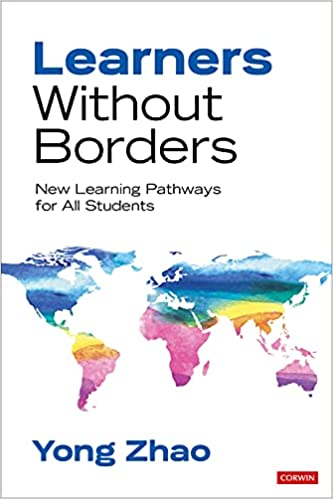




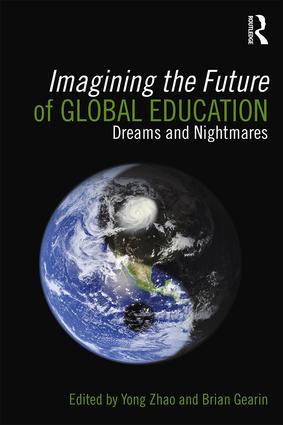
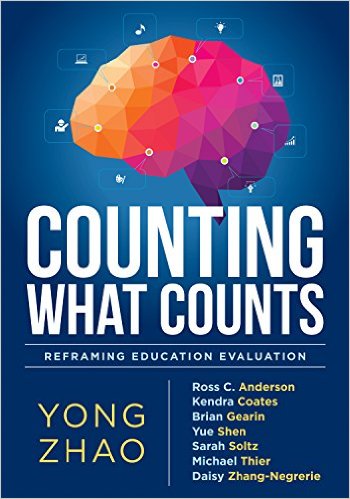


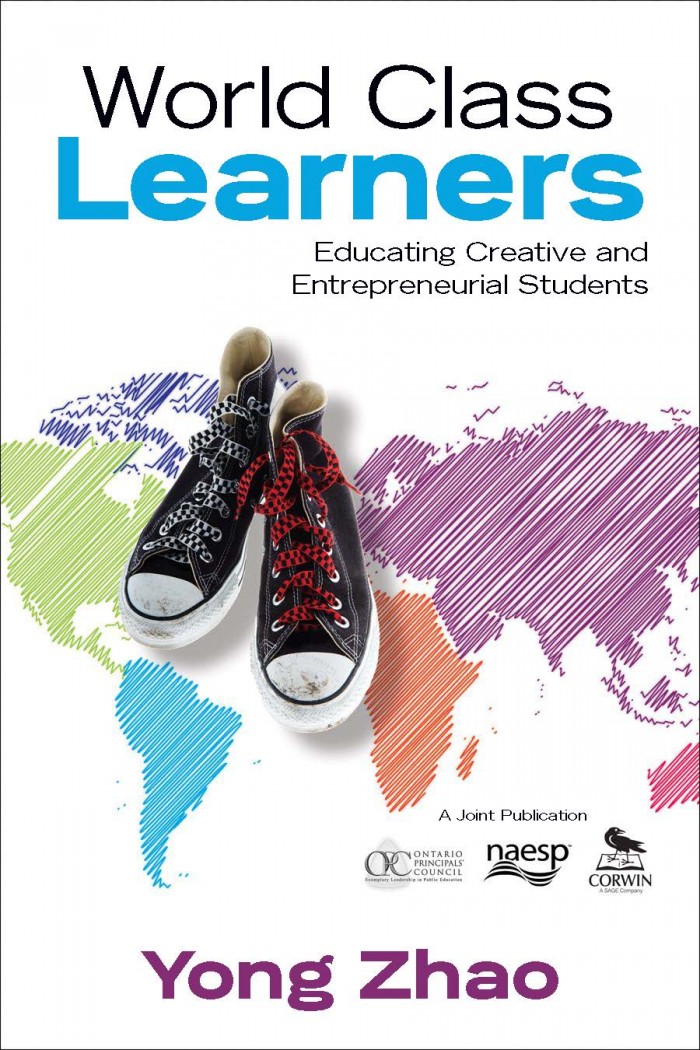


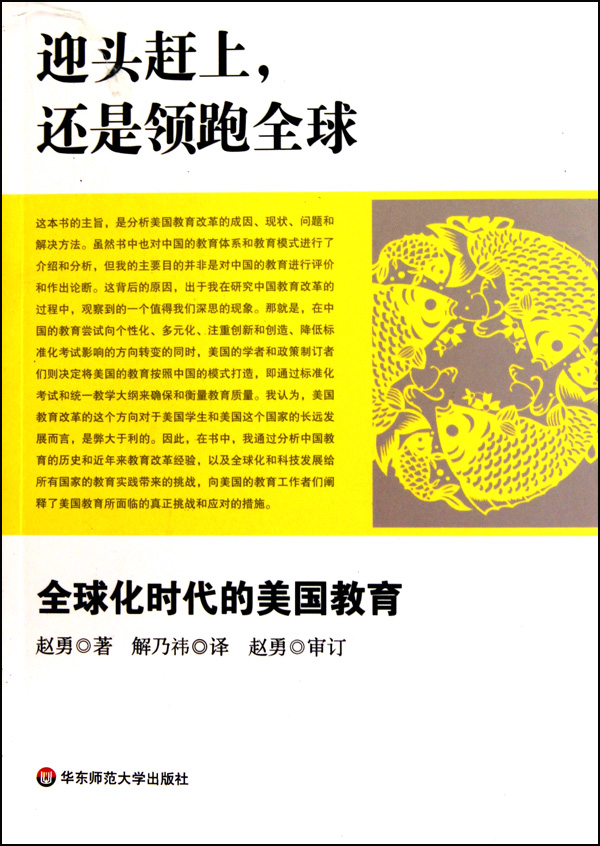











Professor Zhao,
It was a pleasure to see you in England and interesting to hear your keynote address.
We actually see the issues of globalization quite similarly; it is our response to those issues that differs.
You find it disturbing that “The essence of the message is that education systems in the West must prepare their students to compete with students in the developing nations.”
I find it invigorating, because it leads our children to strengthen themselves intellectually and develop areas of differentiation in their adult intellectual capabilities – seeing opportunity where others see problems.
Competition being the essence of business, it also delivers lower cost products and services as companies compete on features, price and service.
I think where we may diverge is WHEN a young person should shift predominantly to their individual strengths for their next 50 years of self-sufficiency.
Much like competitive sports, I contend a strong foundation in basic skills is required of young players before they can become a master in one area.
So math, physics, chemistry biology, computer science, English, English grammar, world history, music, geography, civics, Mandarin, Arabic, art and drama should be prominent in their lives until they reach college. Even if they struggle with some subjects, that’s to be expected. Struggle is a part of life.
From that solid, broad base out of high school, then a wide array of options opens to the individual in college and they have the foundational skills to confidently pursue any of their unique interests.
This is not to say a child’s passions at a younger age should be quashed or ignored – far from it – they should be nourished. But not at the expense of weakening their broad intellectual foundation.
Perhaps I am wrong about your position – that you would sacrifice intellectual breadth in favor of early and complete focus on finding a child’s unique attributes.
My concern for the child is that as the world evolves – the talents valued today may be worthless tomorrow. Without a full intellectual foundation, transitioning to other valuable work may be impossible.
If I misunderstand your position, please clarify.
Sincerely,
Bob Compton
Executive Producer
Two Million Minutes
[…] span, then the message is clear: learning is living, vital. To return to Yong Zhao, he argues strongly that education should not be about homogenisation. I can but agree. Learning is more than […]
Yong Zhao makes so much sense to me. I just don’t believe all the political hype created by the education-for-profit-gurus. The United States educational system was improving by leaps and bounds until they started brainwashing people about our failures based on standardized test data.
I can only hope American education has only stagnated and not declined since the emphasis on testing that has overwhelmed education policy and practice since NCLB and now with LEARN!
My husband and I grew up in a small town in Colorado and were only able to take Algebra I and II, Geometry and Advanced Math, a course that included an introduction to Trigonometry and Calculus. From that experience he went on to get a BA and an MA in math and I went on to get a BA, ME, and EdD. He’s a retired math teacher and I’m a retired primary teacher and teacher educator. We’ve both been very successful as educators and we both have been able to help improve math education by helping districts and administrators and teachers and future teachers focus on the National Council of Teachers of Mathematics Standards, which ironically, de-emphasize testing. So of course the Standards Gurus don’t just reference the NCTM Standards. Their purpose is to make money with more and more tests which they produce and with more and more test prep materials which they also produce.
If American education were truly falling behind, that small town and others like it would still be offering the same mathematics curriculum, but it and the others, I’m sure, are not. That small high school with only about a hundred more students than in the ’50’s now offers Calculus I and II and Trigonometry. And a far higher percentage of students succeed in these courses than when we were in school.
The high cost of standardized testing is driving the arts and literature and even recess out of the curriculum and there are fewer and fewer opportunities for students to engage in creative experiences. Creative learning experiences present reasons for youngsters to learn how to read and write as well as become more creative in whatever ways appeal most to them. Saving creativity for adolescence, a time when kids are shy about exposing their talents and cruel about teasing others, results in far fewer successful participants. It’s too late for many and they don’t even have the opportunity to appreciate the artistic talents of their peers and others.
My most recent education experience was supervising practicum of Master of Arts in Teaching students. It was heart-breaking to observe these intelligent young students use “teacher-proof” materials, that is those provided with scripts produced by education-for-profit companies. Most had been cautioned not to deviate from the NCLB and Reading First materials and were afraid to do so. A few made minimal changes and most could discuss with me what they would do if they were free to teach as effectively as they knew how. Such a waste of their intelligence and abilities!!! And such a waste of the intelligence and abilities of their students, most of whom were being bored to death with drill and practice to memorize trivia that would be on state standards test. This is happening in Arizona, one of the first states to jump on the NCLB and Reading First bandwagon. If indeed, all of that was going to make a difference, why hasn’t it? If these same children had real books to read and real writing to do and real investigations to pursue and read and write about as well as real experiences with the arts, they would actually score higher on standardized tests than they do with the test prep materials. Not only would they enjoy school more, but so would their teachers. It’s the creative, but bored teachers who leave the field today. Some of these MAT students will never become teachers because they’ve already seen first hand just how deadly NCLB is and are finding out that LEARN is just more of the same.
I am not an educator and have no special training in teaching or education. I am a professional with 40 years of education and experience in natural resource science and policy. I believe that the intellectual debate between Dr. Zhao and Mr. Compton misses the real issue. By the way, Happy New Year. The issue in U. S. education is the students that get neither a full intellectual foundation nor an opportunity to pursue their individual creative talents. These are the kids that are left behind, never challenged, communicate poorly and don’t get a basic secondary education of any kind. Our society cannot compete, cannot flourish and may not survive if a large percentage of the population is not able to contribute. Society, schools, educators and the teachers of educators should be accountable to all youngsters. If parents are to be held accountable they need to have the opportunity to choose schools and programs to fit the need of their children and schools and programs need to compete to attract students that will provide the diversity Dr. Zhao speaks of. Thank you for the opportunity to learn from the discussion.
I read your comment. I appreciate it. Competition being the essence of business, it also delivers lower cost products and services as companies compete on features, price and service.
I think where we may diverge is WHEN a young person should shift predominantly to their individual strengths for their next 50 years of self-sufficiency.
I read your comment. I appreciate it. Competition being the essence of business, it also delivers lower cost products and services as companies compete on features, price and service.
I think where we may diverge is WHEN a young person should shift predominantly to their individual strengths for their next 50 years of self-sufficiency. Création de site internet
[…] “Global Competitiveness Reinterpreted: Homogenization vs Diversification” by Yong […]